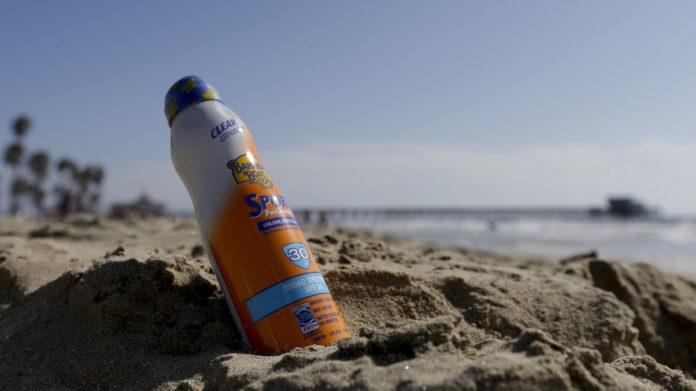6 everyday products you didn’t know harm the environment

Next time you look under your bathroom sink, you might just find a number of everyday items that are ruining the planet.
Many products we use to stay clean and healthy are actually harming the environment, animal life and — ultimately — us, too.
Those microbeads in your daily facial cleanser might help clear your pores, but they’re made of plastic and clogging the world’s waterways. Sunscreen is crucial to prevent skin cancer, but your specific brand of SPF 50 could be contributing to coral bleaching. And the palm oil in that moisturizer is likely a result of manufacturing practices that contribute to climate change and negative social impact.
Below, we’ve compiled a list of common lifestyle products that are harming the environment every time you use and purchase them.
Everyday products harming the environment
-

1. Facial cleansers with microbeads
A number of facial cleansers, toothpastes and other cosmetic and hygiene products use plastic microbeads as an exfoliant. Not only are these polyethylene beads potentially harmful to your skin if used too roughly, they’re also terrible for the environment, adding to plastic pollution in waterways. As a result, fish and other marine life may mistake these microbeads for food.
Illinois was the first U.S. state to ban products with microbeads in 2014. New York’s attorney general proposed a similar ban in 2014, and asked lawmakers to pass the Microbead-Free Waters Act in February 2015, following a report that New York residents wash 19 tons of microbeads down their drains each year. California, Ohio and Minnesota are considering similar legislation.
You can find a PDF of known products with microbeads through the International Campaign Against Microbeads in Cosmetics.
Image: Mashable composite; Amazon -

2. Shampoos and soaps with sulfates
Sodium laureth sulfate (SLES) is a common chemical compound found in cosmetics, and it also acts as a foaming agent in various hygiene products, such as shampoo and soap. While the suds may feel good on your skin and add the illusion of extra cleanliness, SLES can be contaminated with traces of 1,4-Dioxane, which the EPA has labeled a probable human carcinogen.
The chemical isn’t readily biodegradable, which means it can build up in the environment and stay there for a long time. You can easily find sulfate-free products from several big brands.
Image: Jeff Karpala -

3. Sunscreen
According to a widely cited 2008 study from the journal Environmental Health Perspectives, four common chemicals in sunscreen — paraben, cinnamate, benzophenone and camphor derivatives — contribute to coral bleaching (leaving the coral vulnerable to viral infections, disease and death) around the world. The researchers estimated that up to 6,000 metric tons of sunscreen wash off into the oceans each year, and 10% of all coral reefs have been affected.
Experts suggest using eco-friendly chemical sunscreens or organic mineral sunscreens instead.
President Obama signed the Sunscreen Innovation Act into law in December 2014, establishing an official path for review of safer ingredients in sunscreens. However, the focus is more on finding healthier and more effective ingredients, rather than on environmental conservation.
Image: Mujo Korach/Matton Collection/Corbis -

4. Deodorants with triclosan
Triclosan, an antibacterial agent used in many deodorants, soaps and cleaning products since 1972, now permeates the environment, found in places such as surface waters, soil and fish tissue.
According to Tufts University’s Alliance for the Prudent Use of Antibiotics, studies show that the chemical has been found in rivers, streams and sewage sludge used as fertilizer. While there are conflicting reports pertaining to triclosan’s harmful affects in animals, it has proven toxic to aquatic organisms.
Look for products with alcohol or hydrogen peroxide as the antibacterial agent instead.
Image: Udit Kulshrestha/Bloomberg/Getty Images -

5. Lip balm derived from petroleum
Most lip balms are made from ingredients derived from petroleum, such as petrolatum (also known as petroleum jelly). As a result, petrolatum could be contaminated with policyclic aromatic hydrocarbons (PAHS) — which are high in wildlife and environmental toxicity.
The European Union has banned the use of petrolatum in cosmetics unless the full refining history can show it contains no carcinogens.
As an alternative, find balms that are made from more natural ingredients.
Image: Fabrice Lerouge/Photononstop/Corbis -

6. Moisturizers with palm oil
Palm oil is in half the products we buy, according to The Guardian, including popular health and beauty products, such as moisturizers.
But increased demand for the ingredient has spurred unsustainable production practices, according to a March 2015 report from the Union of Concerned Scientists (UCS). Oil palm plantations are guilty of deforestation, landscape fires and draining peatlands — all of which contribute to climate change. Toxic smoke from landscape fires kills 110,000 people in Southeast Asia every year, and the creation of new plantations can have negative social and economic impacts.
Opt for products that brands have clearly labelled as made from sustainable palm oil.
“The best solution is [for] multinational companies to demand a product that [is] produced without harming the environment or the surrounding populations,” Lael Goodman, author of the UCS report, said in a statement.
Image: Milan Radulovic/Westend61/Corbis

Image: Mashable, Tyler Tronson
Have something to add to this story? Share it in the comments.
